Récursivité dans $\mathbb{N}$
06/02/2024
Pour comprendre la récursivité, il faut comprendre la récursivité.
Rappels
- Fonction
fact$\rightarrow$ démo live. -
let rec fact (n:int):int = match n with |0 -> 1 |_ -> n*(fact (n-1)) ;; - Représentation des entiers de Peano: \[ \textrm{nat_peano} = \{O\}\cup\{S(n) | n \in \textrm{nat_peano}\} \]
-
type nat_peano = O | S of nat_peano;;
On distinguera deux concept clés dans la réalisation d'une fonction:
- La Spécification
- Abstrait
- Précis
- Proche d'une description mathématique
- Contient des exemples représentatifs
- La Réalisation
- Algorithme en Français
- Algorithme en OCaml
Fonction int_v_nat_peano
- Spécification
- profil: $\mathbb{N}\rightarrow\textrm{nat_peano}$
- sémantique:
int_v_int_peano(n)est le naturel de Peano correspondant à l'entier $n$. - exemples:
int_v_int_peano(0)=Oint_v_int_peano(4)=S(S(S(S O)))
- Réalisation
- équation de récurrence:
int_v_int_peano(0)=Oint_v_int_peano(p+1)=S(int_v_int_peano(p))
- implémentation: $\rightarrow$ démo live.
- équation de récurrence:
- Terminaison
Montrer que pour tout $n$ dans $\mathbb{N}$ la fonctionint_v_nat_peanotermine.
$\rightarrow$ démo live.
Addition dans nat_peano
- Spécification
add- profil: $\textrm{nat_peano}\rightarrow\textrm{nat_peano}\rightarrow\textrm{nat_peano}$
- sémantique:
add n1 n2est le naturel de Peano correspondant à la somme des entiers $n_1$ et $n_2$. - exemples:
add O O=O- $\forall\textrm{x},\quad$
add x O = x add S(O) S(O) = S (S O))
- Réalisation
- équation de récurrence ?
- Implémentation:$\rightarrow$ démo live.
La fonction puissance
- Spécification
- profil: $\textrm{puissance}:\mathbb{R}\rightarrow\mathbb{N}\rightarrow\mathbb{R}$ ou $\textrm{float}\rightarrow\textrm{int}\rightarrow\textrm{float}$
- sémantique: Élève un réel à la puissance $n$
- exemples:
- $\textrm{puissance}(x,0) = 1$
- $\textrm{puissance}(2,2) = 4$
- $\textrm{puissance}(-1,3) = -1$
- La Réalisation
- $\textrm{puissance}(x,0) = 1$
- $\textrm{puissance}(x,n) = x\times\textrm{puissance}(x,n-1)$
- Implémentation:$\rightarrow$ démo live.
- Terminaison:$\rightarrow$ démo live.
- Complexité: Combien d'appel à la fonction ?
Possible de faire mieux ?
- $x^{2n} = x^{n} \times x^{n}$
- $x^{2n+1} = x^{n} \times x^{n} \times x$
- Implémentation:$\rightarrow$ démo live.
- Complexité: $\sim \log n$

Fonction mult
- profil: $\mathbb{N}\rightarrow\mathbb{N}$
- sémantique:
mult x y = x*y - exemple:
mult x 0 = 0 - équations récursives:
-
mult 0 0 = 0 -
mult 0 p = 0 -
mult q 0 = 0 -
mult p q = (mult (p-1) (q-1)) + p + q - 1
-
- Implémentation:$\rightarrow$ démo live.
- Terminaison:
mesure p q = min(p,q)
Conclusion
On suit toujours à peu près le même modèle
- Spécification: profil, sémantique, exemples.
- Réalisation: équations récursives, implémentation.
-
f(0)=... -
f(p+1)=...f(p)...
-
- Terminaison: mesure =
- même arguments que ceux de la fonction
- mesure $\in\mathbb{N}$
- décroit strictement à chaque appel récursif (équations récursives)
Attention aux fonctions "hors modèle"
- Quotient de la division
-
puiss2
À suivre:
- Fonctions mutuellement récursives
- Listes
Slides disponibles sur pierre.wulles.org:
Ce cours est sous licence Creative Commons CC BY-SA 4.0 Vous êtes libre de le réutiliser pour votre usage personnel.
